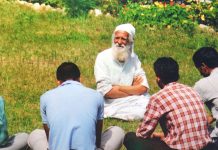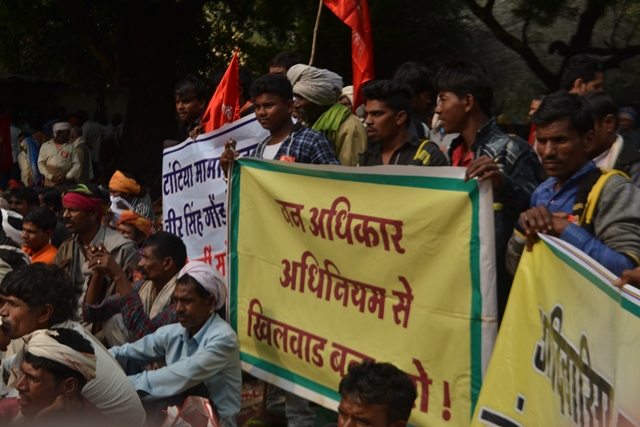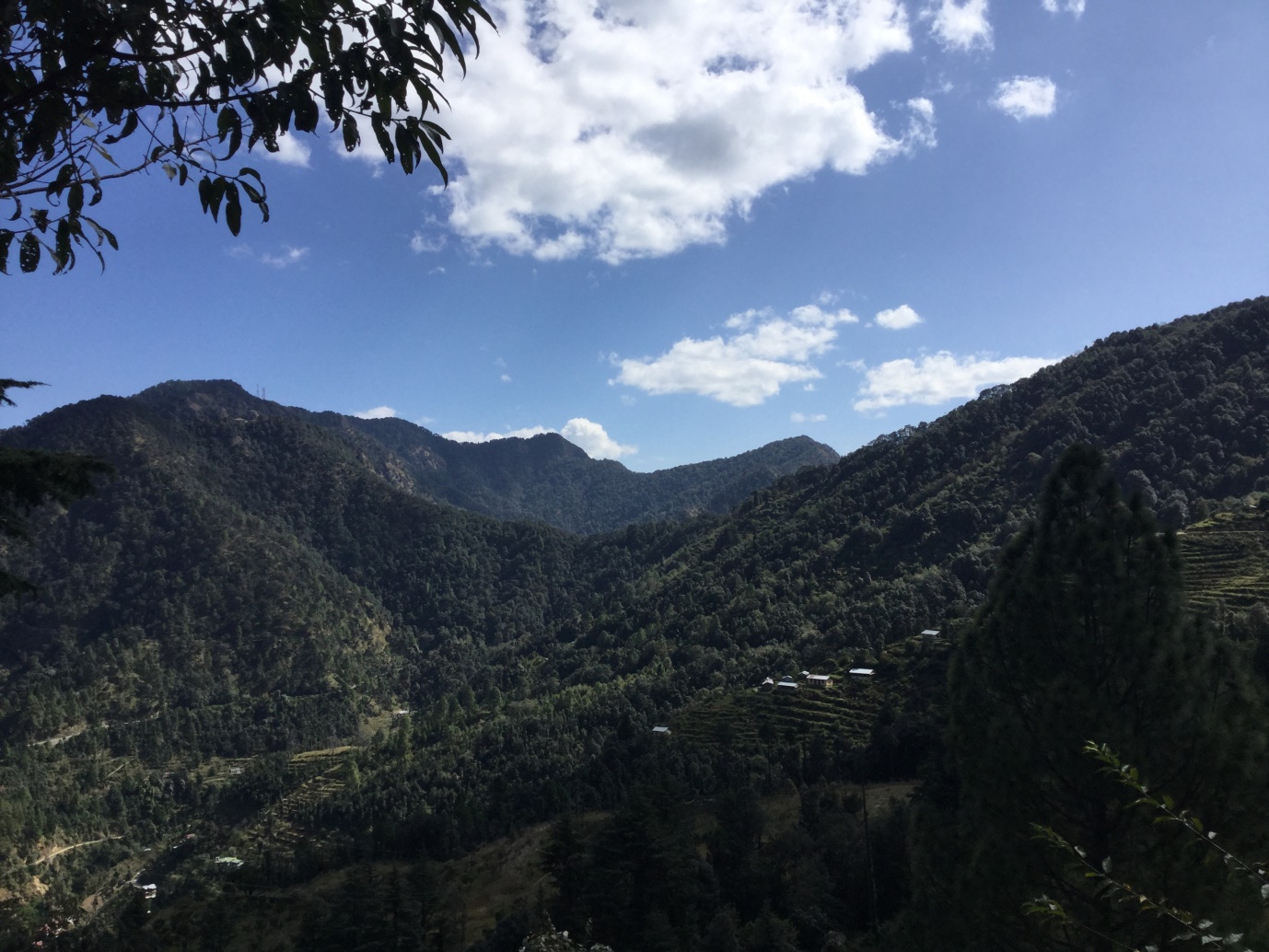The temperature was touching -15 °C as the sun set in Tsaba valley in Ladakh. We were bunched inside a tiny bunker, all seven of us. Making the most of this opportunity, Accho Chosgyal whose bunker it was, decided to head home for a night. He would be seeing his family after many weeks.
“Keep an eye out for my livestock, will you,” he uttered as he left.
We were now in charge of his precious goats that were corralled close by.
As we cooked our meal on a tiny stove, the bunker grew warm and cosy. We had walked six hours to get here from the closest village. As we discussed our plans for the next day, the thought of sleeping in the tent pitched outside began to haunt me. Just as we were polishing off our dinner, there was a knock at our door. It was Azang Nawang, our friendly neighbour, who slept in the only other bunker next to ours. After sharing our meal, Azang Nawang enquired about our arrangements for the night.
“Four of us will squeeze in here Azang le, the rest will sleep in that tent,” we said.
“The tent? Won’t you feel cold there? You can sleep in my bunker instead,” he said.
“And what about you? Where will you sleep?”
“Oh, I sleep out in the open, next to my livestock. I make a bed of manure on which I sleep. It keeps you so warm. Anyhow, winter is coming to an end and it’s getting warmer each night.”
“Did you sleep like this all winter? Out in the open?” we enquired.
“Yeah. I prefer it that way. I can stay close to my livestock. If there’s a snow leopard or wolf lurking around they create a ruckus.”
As I walked out of the bunker and towards our tent, I could see Azang Nawang tucking himself under several woollen blankets. I shined my torch at him. He grinned back looking most comfortable. I could barely stop shivering.

Tsaba valley: an animated landscape
If you drove from Leh on the Leh-Manali highway, you would pass a cluster of villages that include Gya, Miru, Sasoma, Lato and Rumptse, before the ascent to Taglang La, a high altitude pass in Ladakh. Tsaba is one of several valleys adjoining this cluster of villages. Though small in size (c. 80 sq.km.), Tsaba valley and its surrounding areas are incredibly lively. Tsaba valley is contiguous with the Tso-kar basin, a popular destination among bird-watching enthusiasts globally.
This valley first got noticed when it was found to host a small population of Tibetan argali (Ovis ammon hodgsoni), a species of wild sheep, in the late 1990s. Currently, it is home to a vast diversity of wildlife — albeit in low numbers — ranging from carnivores like snow leopards (Panthera uncia), Himalayan wolves (Canis lupus chanco), and Eurasian lynx (Lynx lynx) to ungulates like the Tibetan argali (Ovis ammon hodgsoni), Ladakh urial (Ovis orientalis vignei), bharal (Pseudois nayaur) and even the odd kiang (Equus kiang). It also houses healthy numbers of smaller creatures like Himalayan marmots (Marmota himalayana), red fox (Vulpes vulpes) and a few species of pika (Ochotona sp.). Among all high altitude landscapes of India few can stake claim to such diversity of wildlife as Tsaba valley.
But all this meant little for Azang Nawang and other herders like him who reared livestock across the vast Changthang region of Ladakh, I thought.

Shared spaces, shared lives
The next morning Azang Nawang was up and about as the sun hit our corner of the valley. As we crept out of our tent, he called us over for tea. We sipped on some hot tea as Azang Nawang went about his chores. He was picking up lambs, just a few days old, from their shed and bringing them into the corral that held the adult goats. Carefully he placed each lamb near the udder of a milking doe.
“How do you know which one goes where?” I asked.
“I have spent winter tending to them all alone. How can I not know,” he clarified.
I have come to appreciate this relationship that herders share with their livestock. To them this is not merely a transactional bond, which yields returns. It is also an emotional investment. Many herders have spoken of how they converse with their animals. Some even claiming that their animals respond back in ways only perceived by them.
That partially explained Azang Nawang’s willingness to endure the bitter cold and stay close to his animals. But how did he feel about the pesky carnivores that were out to eat them? The relationship herders share with them is equally fascinating, especially with wolves.

The domestic dog and the wolf are believed to be cousins, a herder once shared old folklore.
The dog and the wolf lived together and possessed qualities that helped them survive in the wild, according to the folklore. The wolf was a stealthy runner while the dog was gifted with the power of smell. Together they complemented each other perfectly. As time went they made a pact: to help each acquire the skill possessed by the other. The wolf was first and over time he taught the dog to run as fast as himself. It was now the dog’s turn to teach the wolf the art of sniffing. The dog was slow in training the wolf, who was a good learner. Soon the wolf could sniff within a distance of two rope-lengths. The dog promised to teach him the final trick soon. But one morning the wolf was shattered to see his cousin make a run to go join a new companion. He had made friends with man out of the fear of having to share his prized skill. The wolf has remained lonely ever since. He sometimes returns to lift man’s animals (livestock) hoping to square this incomplete deal.
There is an attempt to find reason in the behaviour of the wolf. The otherwise wily wolf appears naïve in his judgement. Often such acts of predation are also linked to a divine intervention for past wrongs. By doing so, wolves may be executing an inevitable decree, thus playing a bigger role in these shared spaces.
Religion plays a vital role in the lives of people in Ladakh. Predominantly Buddhist, people place great faith in teachings by religious leaders. Buddhism preaches compassion towards all sentient beings – be it the goat or the wolf. People’s interpretation of this principle can be incredibly nuanced.
To the herder this may not be a choice of whether they wish to save the wolf or the goat. After all which life should he privilege, if all beings are equal? In a landscape so frugal, choosing to save lives of one species over another may not be a matter of choice.
An old way of saving livestock from wolves across these parts was through the use of traditional wolf traps, locally known as shang-dongs (derived from shangku, wolf, and dong, trap). These traps, typically built near villages or herder camps, comprise large pits with inverted funnel-shaped stone walls. Herders place a live bait of livestock to attract wolves. Once inside, the funnel-shaped walls prevented the wolf from escaping and trapped wolves would usually be pelted to death with stones. How does this reconcile with their religious beliefs?
“It is the wolf’s greed that gets the better of him. In our frugal landscapes greed is a deadly sin. It comes at the cost of greater good,” Accho Tashi a herder from Chushul had once explained.
“But did you know, once trapped, the wolf realises his fault. Seldom do you find them kill the goat that got them there in the first place. The wolf makes friends with his meal, in the hope that that may buy him a fresh lease of life.”
Even the starkest situations are laced with irony.

Talking conservation
When I first came to these landscapes, my work seemed simple: to encourage local communities to conserve the rare high altitude wildlife of these regions. Armed with insights that science provided, I had all the information needed. Add to this the clarity provided by wildlife protection laws and everything was clear as chalk and cheese.
Spending time with herders gave me a reality check. They heard me out patiently, but posed uncomfortable questions. Clearly their knowledge was many times deeper than I had imagined. Speaking with my colleagues Kaga Karma Sonam and Rigzin Dorjay le, gave me a peek into the many dimensions I was missing.
Kaga Karma Sonam, himself from Rumptse, had spent over a decade working with Changpa herders. He understood the hopes of the herders and tried to balance them with the imperatives to conserve wildlife locally. He exposed me to the life of the herders and to their worldviews. This experience was humbling.
Karma le understood that for the herders, safety of their livestock came first. Over the years he had led our team to work closely with these herding communities in creating conditions that favoured conservation.
This happened by setting up locally-managed interventions that helped herders prevent losses by wildlife or by putting in place mechanisms that helped them cope better in case they faced a loss. It began with a community-led livestock security programme to cope with the financial loss of livestock killed by wild carnivores. With time these efforts expanded to measures like protecting corrals that are susceptible to attacks by wild carnivores causing surplus killings of livestock, to working with herders to free up pastures and make them available to wild ungulates. Implicit in all of these efforts was a nuanced understanding of the local context, empathy for the challenges faced by herders and respect of local belief systems.
More recently we had grappled in our attempt to decipher herder’s relationship with wolves. Despite a complex association with wolves, herders were mindful that they preyed on livestock occasionally in their struggle to survive. Was there a need for shangdongs then?
“Times have changed. They are rarely used nowadays,” mentioned Accho Tashi Phunshog of Miru in one of our conversations.
But they are still around. A few hundred shangdongs scattered across the vast landscape of Ladakh.
Could we do something about them to ensure that they didn’t pose a further threat to wolves? Our discussions with herders led to several ideas. That was when Stanzin Namgail, a young Assistant Professor of Sociology at the University of Ladakh, and himself a Changpa, made a suggestion. He felt that while these structures were used to protect livestock, they stand testimony of past struggles of Changpa herders. In these changed times, could we let these structures stand as a reminder to our future generations while neutralising them by permanently opening the exit to the trap? Could a stupa (a Buddhist ritual structure) be built alongside the neutralised shangdong as a commitment to cause to harm to wolves in future?
This was a powerful thought.
Ajay Bijoor works at the Nature Conservation Foundation (NCF) in Mysore as part of the high altitude programme and manages the community conservation programmes in the cold desert landscapes of Ladakh and Spiti.
This article is republished from The Mongabay under a Creative Commons license. Read the original article.














